Optimize your business: use unlimited savings with Pazago fulfilled now!
Get Started ->Logistics inefficiencies are more than operational hiccups; they’re expensive. McKinsey estimates that 13–19% of logistics costs come from inefficient handovers alone, especially in the mid- and last-mile stages. That’s a significant chunk of spend lost to miscommunication, delays, and fragmented systems.
If you're managing exports, supply chains, or warehouse operations, you’ve likely felt the impact, rising costs, reactive firefighting, and customer frustration. Manual workarounds and siloed tools only go so far. What you need is a logistics framework built on speed, precision, and real-time control.
This blog breaks down the core elements of logistics and operations management. It offers actionable strategies to simplify your supply chain and explores how the right technology can drive resilience and long-term savings.
What is Logistics Operations?
Logistics operations involve the planning, execution, and control of goods movement throughout the supply chain. From the procurement of raw materials to the final delivery of products, each stage demands accuracy and efficiency. These movements influence customer satisfaction, operational expenses, and profit margins.
Here are some of the key components of logistics operations.
- Inbound and outbound transportation
It covers the flow of materials from suppliers and the distribution of finished goods to customers. Efficient transportation reduces lead times and avoids production obstruction.
- Inventory control
It manages stock levels to ensure product availability without excess. It helps balance capital investment with service levels, preventing both shortages and surpluses.
- Warehousing
It includes secure storage, real-time tracking, and integrated picking and packing. Organized warehousing supports fast fulfillment and reduces error rates.
- Shipping coordination
It involves selecting carriers, scheduling dispatch, and balancing delivery speed with cost. This ensures timely arrivals while meeting customer expectations.
- Demand forecasting
It helps anticipate customer needs based on historical data, seasonal trends, and market shifts. Accurate forecasting prevents inventory mismatches and supports production planning.
- Returns management
It ensures smooth processing of returned goods, protecting customer satisfaction while controlling reverse logistics costs.
- Compliance and documentation
It addresses regulatory requirements, customs paperwork, and trade documentation. This reduces legal risk and avoids shipment delays.
Each component interconnects to build a resilient framework for logistics operations. When aligned with the wider supply chain strategy, they support consistent service, cost control, and long-term business success.
Understanding the role of supply chain management is key to improving business efficiency and profitability. Here’s what you need to know.
Also Read: Understanding What Are The Elements Of Logistics System?
Role of Logistics Operations in Supply Chain Management
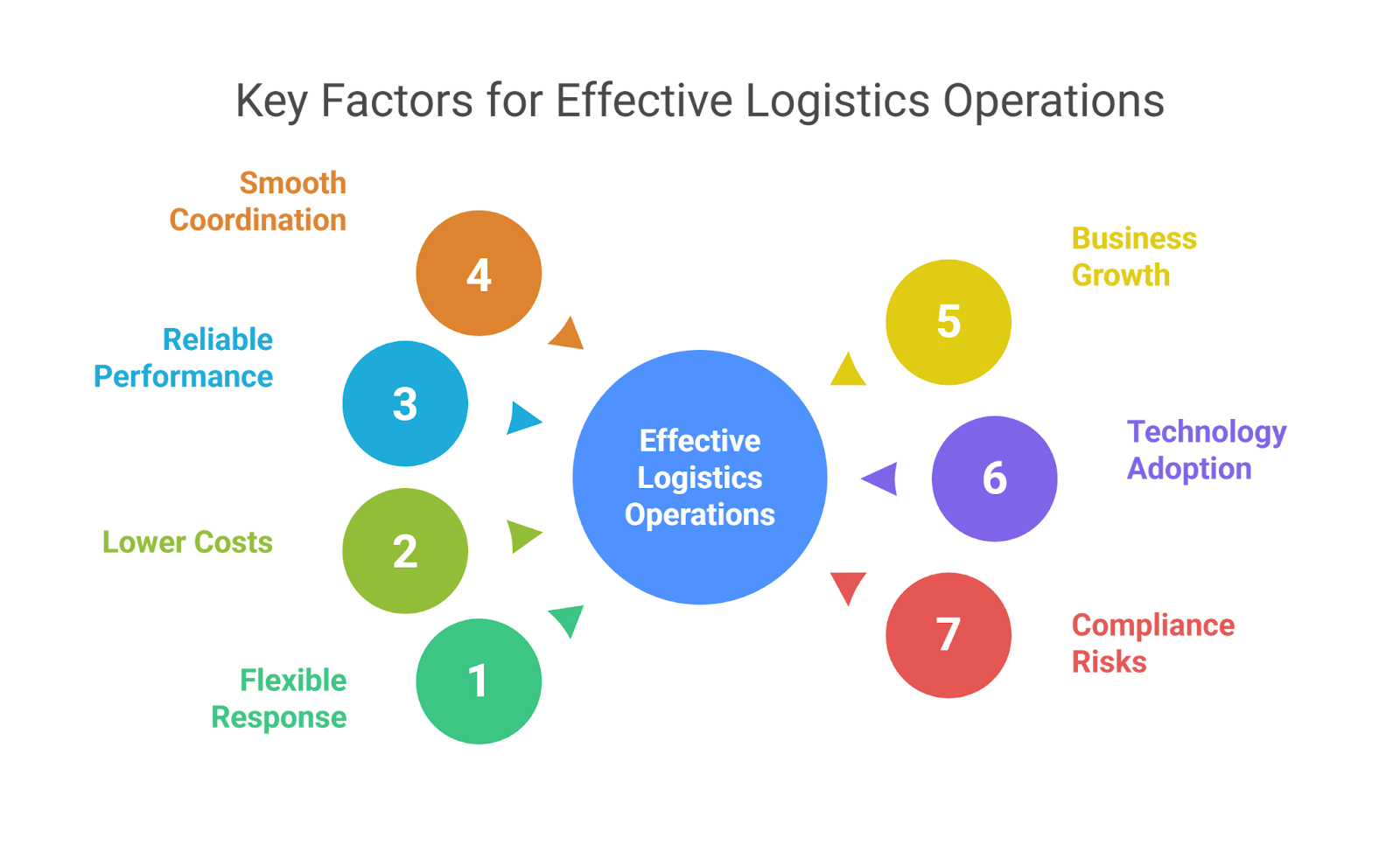
Efficient logistics operations form the backbone of a responsive and competitive supply chain. They optimize processes, improve visibility, and ensure that every step from procurement to final delivery adds value rather than delays. The role of logistics in supply chain performance is:
- Flexible response to change: Logistics decisions impact how quickly a business can respond to demand fluctuations, supplier issues, or market shifts.
- Lower operational costs: Lean logistics reduces excess costs tied to transportation, storage, and labor inefficiencies.
- Reliable performance: Consistent, accurate logistics execution builds trust with customers, distributors, and supply chain partners.
- Smooth coordination across functions: Logistics links procurement, production, warehousing, and delivery into one cohesive workflow.
- Supports business growth: As markets expand and customer demands increase, strong logistics operations support smooth scaling without compromising service.
- Adopts new technologies first: Logistics operations often lead the adoption of innovative technologies such as IoT, AI, and automation, pushing the entire business forward.
- Reduces compliance risks: Effective logistics ensures adherence to trade regulations, transportation laws, and industry standards, minimizing risk and avoiding costly penalties.
Whether you manage bulk orders, direct-to-consumer logistics, or B2B distribution, smooth coordination improves outcomes across the board. Businesses that invest in well-structured logistics and operations gain resilience, agility, and a competitive position in the market.
After understanding logistics operations and its role in supply chain management, let's discuss the key processes involved in logistics and operations management.
Also read: Understanding Different Types Of Logistics in Supply Chain Management
Key Processes in Logistics and Operations Management
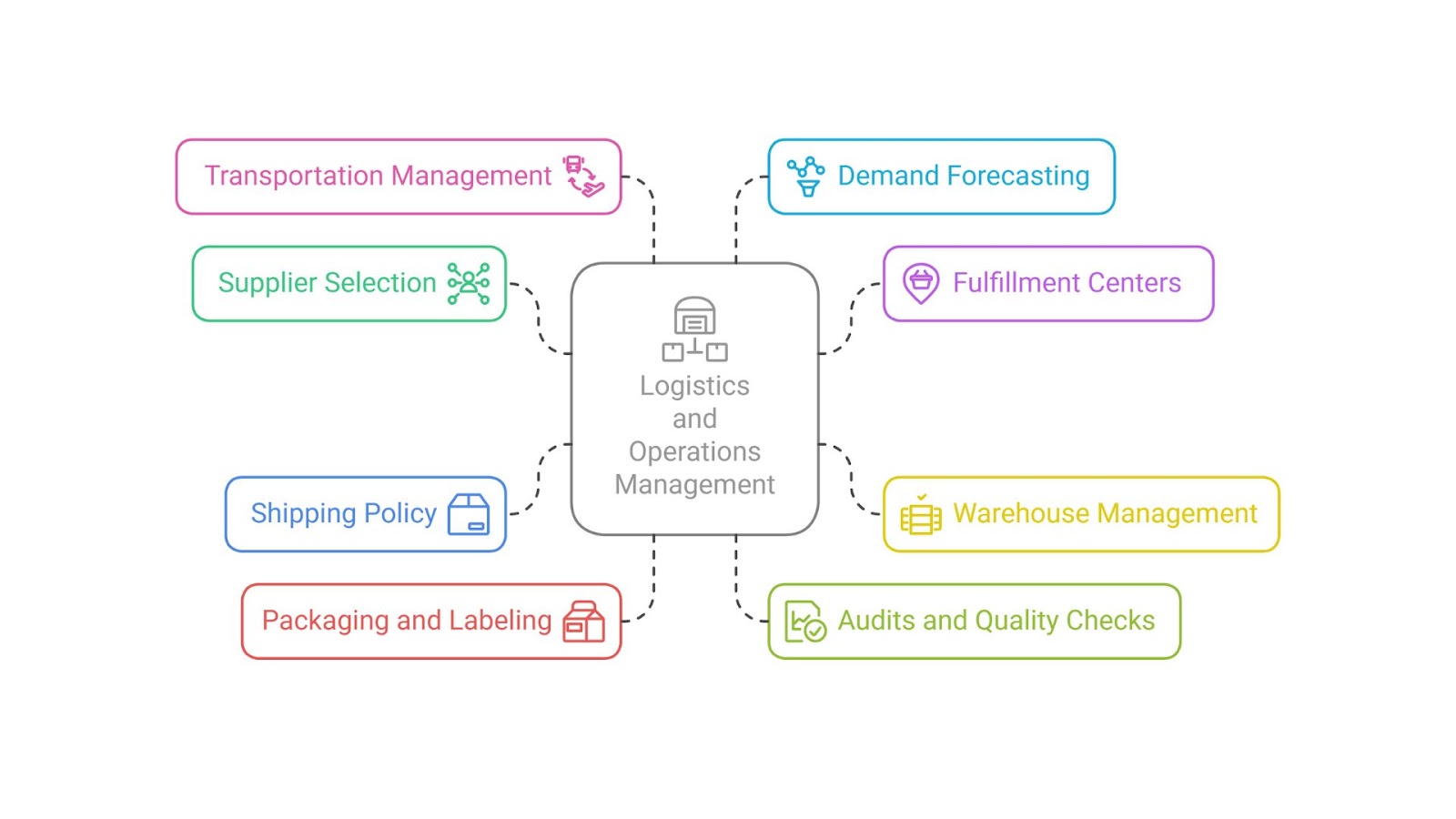
Running a successful logistics operation requires more than just moving goods from point A to point B. It demands a structured approach to sourcing, storing, and shipping, where every step is optimized for speed, accuracy, and scalability. Each process contributes to the reliability of your supply chain and affects everything from cost control to customer satisfaction.
Below are the core processes that form the basis of efficient logistics and operations management.
1. Select Reliable Suppliers and Manufacturers
Choose partners who value consistency and clear communication. Reliable vendors help you avoid last-minute disruptions and keep your supply chain steady. Build long-term relationships with suppliers who prioritize quality, meet lead times, and stay responsive during market changes.
2. Utilize Fulfillment Centers
Outsourcing storage and dispatch to fulfillment centers frees up resources and reduces delivery times. It also helps scale operations without heavy infrastructure costs. With strategic locations, fulfillment centers enable faster last-mile delivery and reduce your shipping zones.
3. Establish an Effective Warehouse Management System
Accuracy starts in the warehouse. A strong system increases visibility, minimizes picking errors, and improves dispatch speed. It also supports better labor allocation, space utilization, and inventory tracking. Integrating barcoding, real-time updates, and smart shelving enhances throughput and reduces downtime.
4. Create a Comprehensive Shipping Policy
Define delivery timelines, cost responsibilities, return conditions, and carrier options. A structured shipping policy sets expectations and builds customer confidence. Clear policies reduce confusion, enhance transparency, and improve the purchase experience.
5. Standardize Packaging and Labeling Processes
Consistent packaging reduces damage during transit and simplifies handling. Standardized labeling improves tracking and ensures compliance with carrier requirements. This process also speeds up scanning and verification at each checkpoint, reducing delays and shrinkage.
6. Schedule Regular Audits and Quality Checks
Routine inspections help spot inefficiencies early. Audits maintain performance standards across inventory, packing, and dispatch operations. They also ensure that processes align with evolving compliance rules and operational benchmarks.
Tools like Pazago make this process more efficient by optimizing how teams conduct and track quality inspections. With digital checklists, real-time reporting, and centralized records, it becomes easier to maintain compliance and meet operational benchmarks, even as requirements evolve.
7. Coordinate Transportation and Carrier Management
Select carriers based on service reliability, coverage, and pricing. Build contingency plans for transport disruptions. Carrier relationships and real-time route tracking tools reduce delivery risks and increase customer satisfaction.
8. Develop a Demand Forecasting Strategy
Anticipate volume spikes, seasonal trends, and product popularity through historical data and market insights. Forecasting enables better planning for stock replenishment, staffing, and shipping schedules, all supporting a more efficient operation.
Now, let us discuss some of the strategies used to optimize logistical processes for your business.
Also read: Understanding The Benefits And Advantages Of Logistics Management
8 Ways to Optimize Logistics Operations & Supply Chain Process
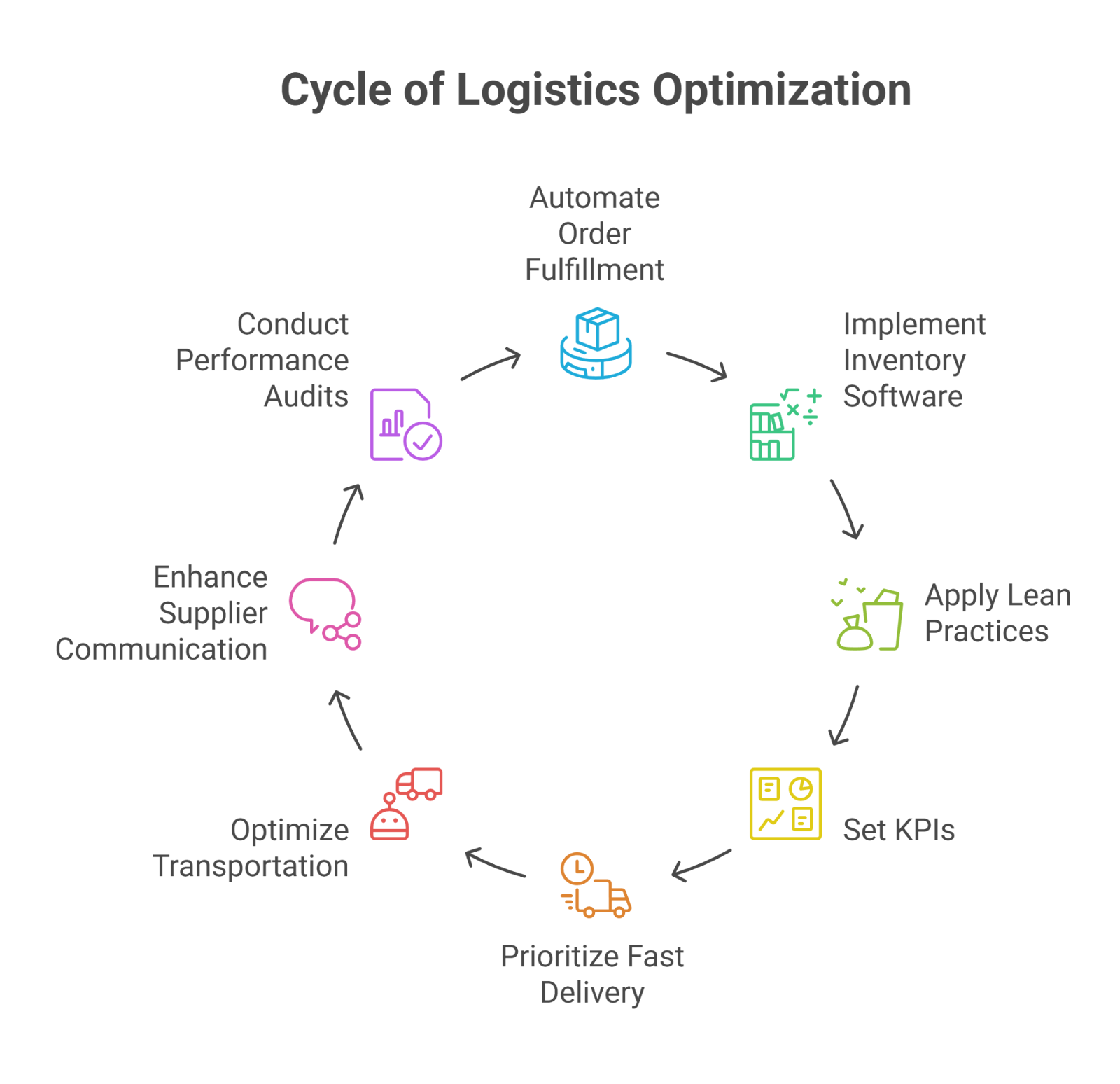
Once you’ve built the foundation of a solid logistics system, the next step is optimization. Fine-tuning operations helps eliminate obstructions, cut unnecessary costs, and improve service delivery. These strategies help to align logistics with changing market demands, customer expectations, and business growth goals.
Below are key strategies that optimize logistics operations and supply chain processes:
1. Utilize Automated Order Fulfillment
Reduce manual input. Automation speeds up processing and limits human error, especially during peak seasons. It allows teams to scale fulfillment capacity without additional headcount and keeps the process consistent during demand spikes.
2. Implement Inventory Management Software
Track stock levels in real time, anticipate demand, and avoid shortages and overstocking. Modern inventory systems integrate with sales channels and alert teams before critical stockouts or oversupply occur, ensuring smoother operations and fewer lost sales.
3. Lean Practices and Reverse Logistics
A lean mindset enhances efficiency and improves customer satisfaction. Incorporate just-in-time inventory models and value stream mapping to eliminate non-essential processes. Strengthen your reverse logistics to reclaim value from returned or damaged goods.
4. Set and Measure KPIs
Track metrics like on-time delivery rate, order accuracy, and inventory turnover to keep operations sharp. For example, a drop in on-time delivery rate could signal roadblocks in your dispatch process, while low inventory turnover might indicate overstocking or weak demand forecasting.
Platforms like Pazago simplify KPI tracking by centralizing delivery data, inventory levels, and shipment statuses in one dashboard. Users have seen up to 20% cost savings and a 50% reduction in turnaround time. The platform flags delays, tracks order accuracy, and helps you act on issues in real time. This improves accountability and optimizes your logistics operation.
5. Prioritize Fast Delivery
Speed matters. Customers expect rapid, reliable shipping. Use regional warehouses and efficient carriers to meet those demands. Implement powerful routing tools and batch order processing to shorten delivery timelines without sacrificing accuracy.
6. Transportation Optimization
Use route planning software, shipment consolidation, and multi-modal transportation to reduce delivery times and cost per unit. Monitor delivery patterns and analyze load efficiency to get more out of your existing fleet or freight partners.
7. Improve Supplier Communication
Strong supplier relationships speed up issue resolution and provide better lead time visibility. Use centralized communication platforms to maintain real-time updates on purchase orders, shipment status, and exceptions.
8. Conduct Regular Performance Audits
Quarterly reviews of shipping data, warehouse productivity, and supplier reliability reveal hidden inefficiencies. Apply Six Sigma, Kaizen, or similar methodologies to identify gaps, track progress, and reinforce a culture of operational excellence.
Now that you know the strategies for optimizing logistical operations, let's move on to understanding the challenges that can disrupt workflows, inflate costs, and impact service quality.
Also read: 10 Expert Tips on Logistics Planning and Strategy
Challenges in Logistics and Operations Management
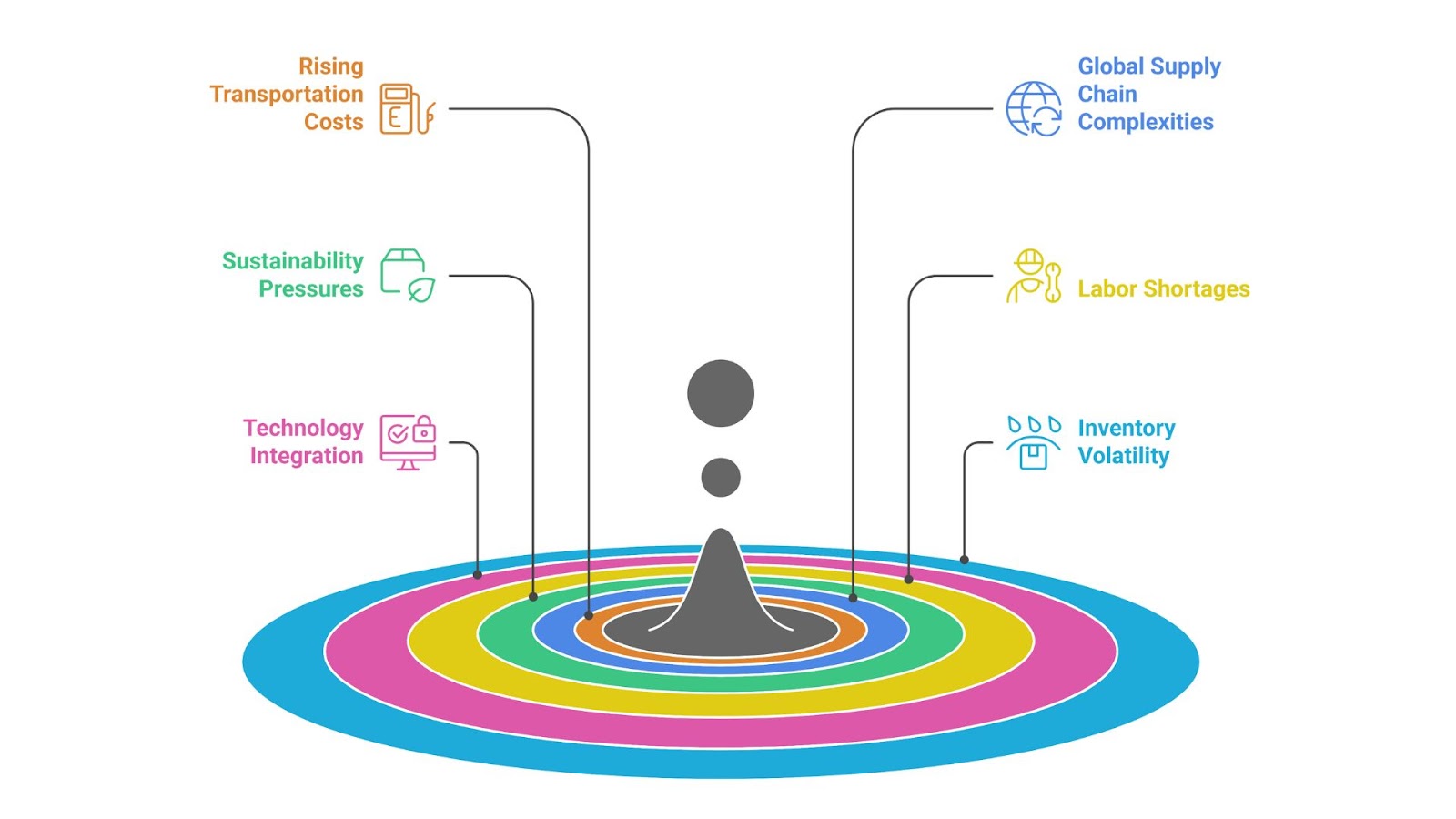
Every logistics operation faces challenges that can disrupt even the most well-run supply chain. Recognizing these issues is key to reducing risk and maintaining efficiency.
- Rising Transportation Costs: Fuel and freight rates continue to climb. Cut costs through shipment consolidation, digital freight tools, route optimization, and shifting to rail or sea when practical.
- Global Supply Chain Complexities: Cross-border operations face disruptions from regulations, delays, and disasters. Mitigate risk with diversified sourcing, real-time tracking, and regional hubs.
- Sustainability Pressures: Greener operations are no longer optional. Lower emissions with efficient routing, electric fleets, eco packaging, and energy-saving warehouses.
- Labor Shortages: Skilled labor gaps persist despite automation. Improve retention through upskilling, flexible staffing, and supportive tech.
- Technology Integration: New tools add value but can be hard to implement. Successful adoption requires system compatibility, security planning, and clear IT alignment.
- Inventory Volatility: Demand shifts and supply delays disrupt balance. Stay agile with predictive analytics, flexible inventory models, and safety stock buffers.
Now that you know the challenges involved in logistics and supply chain, let us now understand the role of technology in logistics and operations.
Role of Technology and Future Trends in Logistics Operations
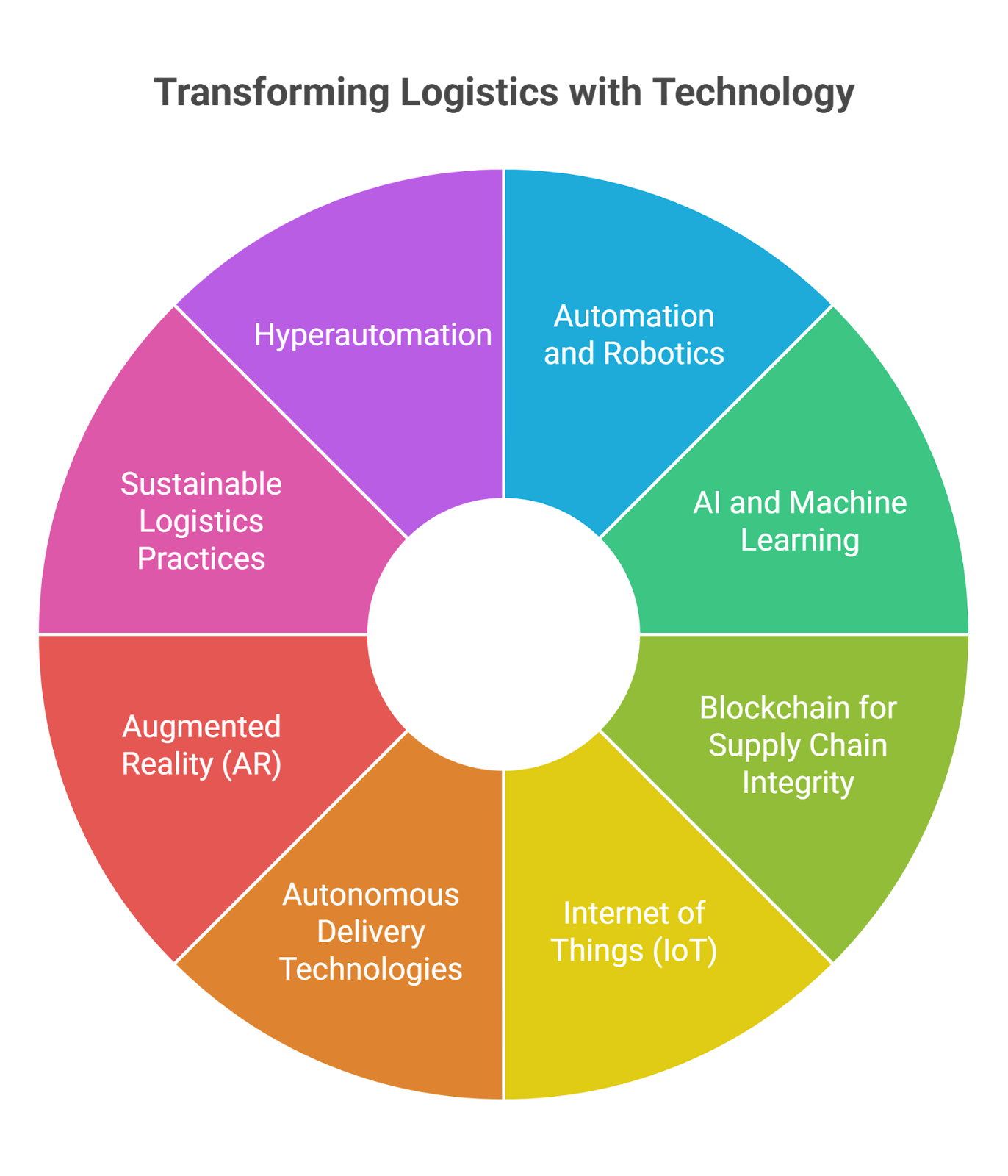
Technology is optimizing logistics and operations, enabling businesses to respond to disruptions, increase efficiency, and scale effectively. As supply chains become more complex, emerging technologies are driving the future of logistics. Here are the key technological advancements and trends reshaping the industry:
1. Automation and Robotics
Automation reduces manual work, increases throughput, and improves accuracy, making operations faster and more efficient.
- Warehouse robots and automated conveyors can increase order handling speed by up to 300%.
- Order Picking and Sorting: Automation reduces human error, ensuring accuracy and allowing workers to focus on higher-value tasks like process improvement.
2. AI and Machine Learning
AI helps shift logistics from reactive to proactive.
- Predictive analytics improve demand forecasting and reduce stockouts. According to McKinsey, applying AI-driven forecasting to supply chain management can reduce errors by between 20 and 50 percent.
- Dynamic routing based on real-time traffic and order data lowers fuel costs and improves delivery times.
3. Blockchain for Supply Chain Integrity
Blockchain ensures security and transparency across the supply chain, building trust among all stakeholders.
- Immutable Records: Blockchain helps verify product origins and prevents tampering or counterfeiting.
- Smart Contracts: Automate customs clearance, payments, and compliance, reducing manual processes and delays.
4. Internet of Things (IoT) for Real-Time Visibility
IoT enables businesses to monitor and track goods at every stage of the supply chain.
- Connected Sensors: IoT devices provide real-time data on temperature, location, and handling, improving inventory control and reducing spoilage.
- Proactive Maintenance: IoT sensors help predict equipment failures and schedule maintenance, reducing unexpected downtimes.
5. Autonomous Delivery Technologies
Autonomous vehicles, such as drones and driverless trucks, are set to revolutionize logistics by providing cost-effective and efficient solutions for delivery.
- Driverless Trucks: Enable faster and more reliable long-haul transportation, especially on highways.
- Drones: Transform last-mile delivery with faster, more cost-efficient shipping options, especially in hard-to-reach areas.
6. Augmented Reality (AR) in Warehouse Operations
AR tools are enhancing warehouse management and operational efficiency.
- Picking Accuracy: AR glasses guide warehouse workers to locate items faster and more accurately, improving picking efficiency.
- Training and Safety: AR aids in training employees and improving safety by offering real-time guidance on handling hazardous areas.
7. Sustainable Logistics Practices
As sustainability becomes a key concern, the logistics industry is adopting eco-friendly solutions.
- Electric Fleets: The shift to electric vehicles (EVs) helps reduce emissions and fuel costs.
- Eco-Friendly Packaging: Reusable, recyclable, and biodegradable packaging reduces waste and meets environmental regulations.
8. Hyperautomation Across Operations
Hyperautomation combines AI, robotics, and machine learning to automate end-to-end logistics workflows.
- End-to-End Automation: Automating entire logistics processes from inventory management to shipping helps reduce manual effort and accelerates decision-making.
- Intelligent Decision-Making: Hyperautomation enables businesses to make data-driven decisions faster and more accurately.
As technology continues to optimize logistics operations, businesses must adapt to stay competitive. Platforms like Pazago allow companies to implement these innovations to enhance their logistics processes. Let’s explore how Pazago optimizes logistics operations.
Optimizing Logistics and Operations Management with Pazago

In global trade, delays and poor coordination can derail profits. A simplified logistics operation reduces errors, controls costs, and improves visibility across shipments.
Pazago is built for exactly that. It streamlines how businesses manage logistics and export operations with tools that reduce errors, eliminate silos, and accelerate decision-making across the entire supply chain.
How Pazago Optimizes Logistics Operations:
- Centralized Document Management: All export documents, from sea waybills to bills of lading, live in one secure dashboard. There is no duplication, no manual follow-ups, and just clear, centralized control.
- End-to-End Logistics Management: Reliable, fast cross-border shipping with a smooth flow of goods from origin to destination, ensuring optimized routes and timely deliveries.
- Real-Time Shipment Visibility: Track shipments at every checkpoint. Receive live updates, address issues early, and give your customers accurate ETAs.
- Efficient Communication: Our centralized platform simplifies coordination, allowing quick issue resolution and faster decision-making across all parties.
- Integrated Quality Inspections: Manage inspections directly from the platform to ensure compliance with global standards for product quality and faster approvals.
- Comprehensive Cargo Insurance: Easily manage cargo insurance to protect against temperature excursions, theft, and damage during transit.
- Financial Simplification: We offer cross-border payment solutions, currency risk management, and financing options, simplifying financial transactions for large shipments.
- Efficient Cross-Border Logistics: Pazago optimises international shipping for cost-effectiveness and timely deliveries, backed by 20+ years of ocean transport experience.
Pazago isn’t just another logistics tool. It’s built to streamline your entire logistics operation, cut delays, reduce costs, and give you control over every moving part.
Conclusion
Strong logistics and operations management lead to efficient, scalable businesses. From inventory control to delivery timelines, every step in the process impacts costs, performance, and customer satisfaction.
By adopting smart practices and using platforms like Pazago, companies can gain better visibility, improve coordination, and reduce delays across their supply chain. Optimized operations not only cut waste but also create room for faster growth and improved service levels.
Looking to integrate and scale your logistics operations? Book a demo and see how Pazago helps you operate smarter.


.png)








